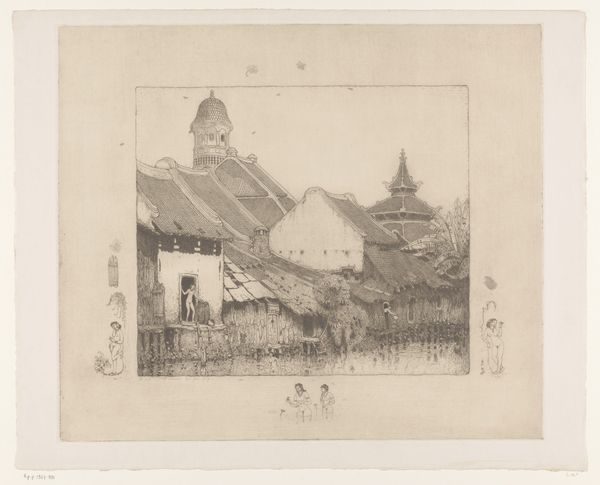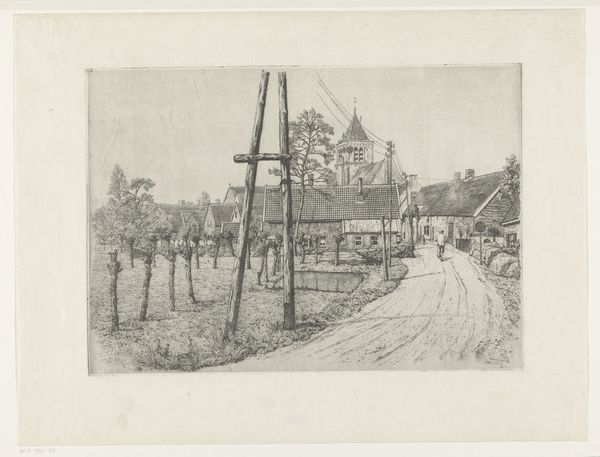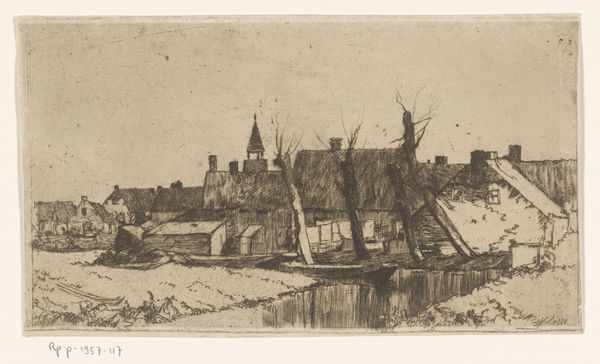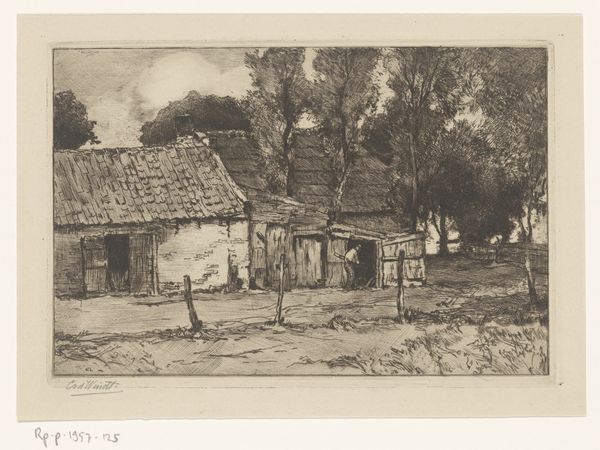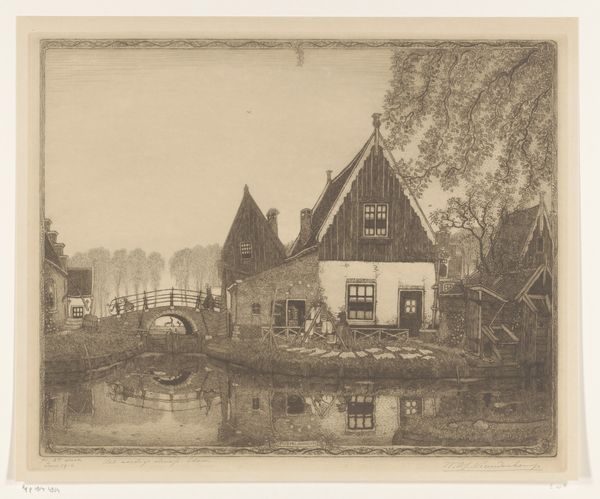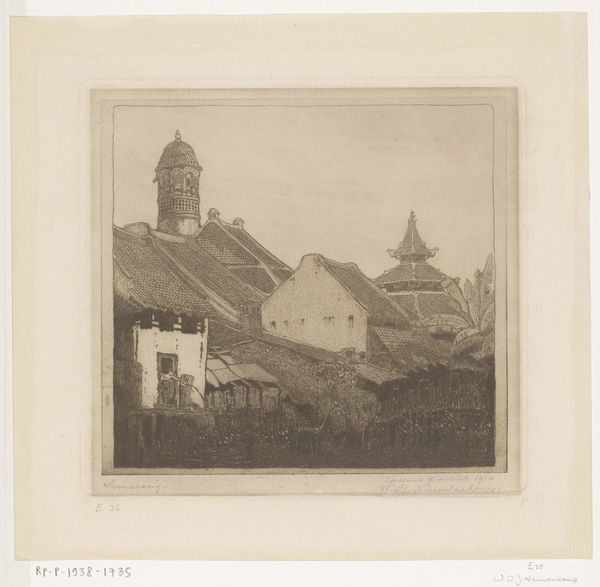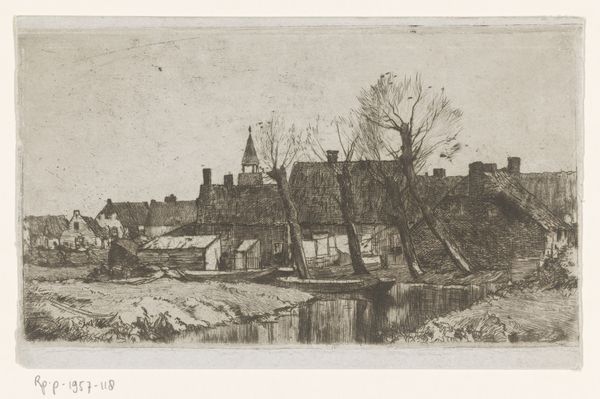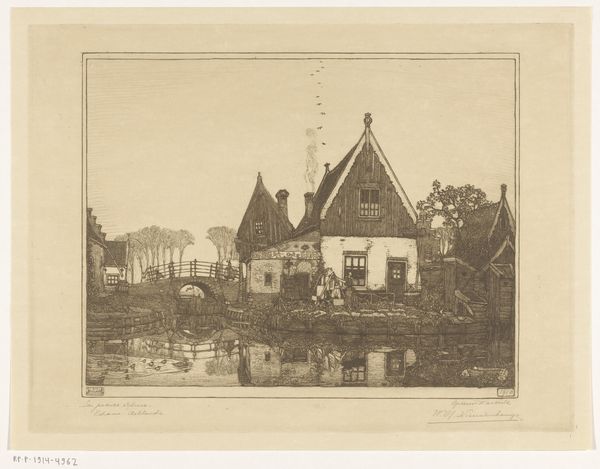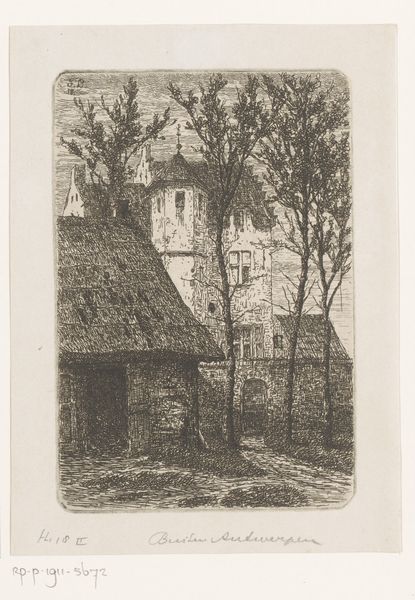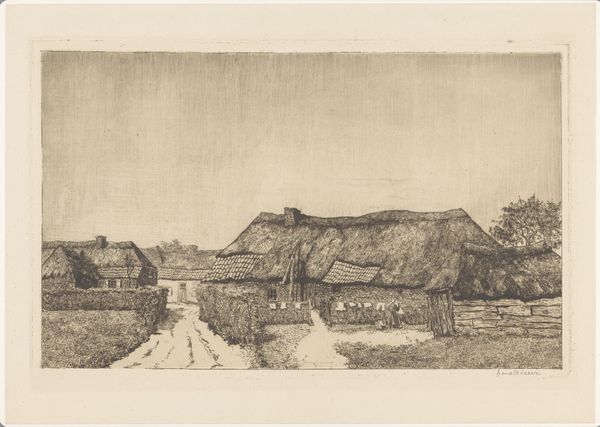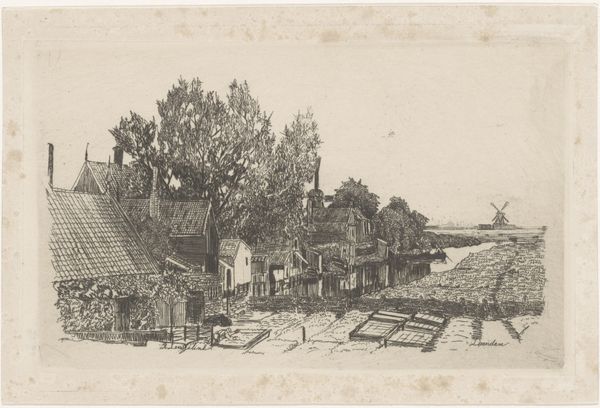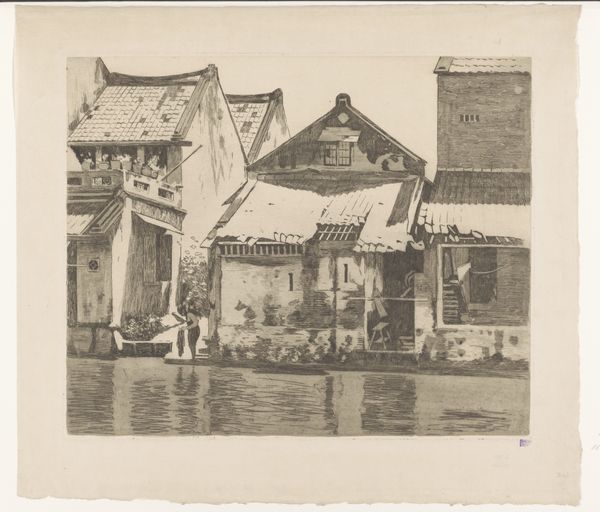
drawing, print, etching
#
drawing
# print
#
etching
#
orientalism
#
cityscape
#
realism
Dimensions: height 353 mm, width 399 mm
Copyright: Rijks Museum: Open Domain
Editor: Here we have Wijnand Otto Jan Nieuwenkamp’s "Huizen aan het water in Semarang," created in 1917, using etching techniques. The print depicts houses by the water in what I believe is Indonesia, with architectural details that remind me of colonial influence. What strikes me most is how the intricate lines seem to both capture the beauty and perhaps subtly critique the social landscape. What do you see in this piece? Curator: It’s a powerful observation. Beyond the aesthetic appeal and technical skill, this etching allows us to explore the dynamics of orientalism and its impact on the representation of colonized spaces. Nieuwenkamp’s meticulous rendering, the almost romantic quality of the scene, prompts us to consider who is viewing whom, and from what position of power. The composition emphasizes the exotic 'other,' inviting a gaze that reinforces colonial hierarchies. Consider, for instance, the depiction of the inhabitants versus the architectural grandeur. Does one overshadow the other, in your opinion? Editor: I hadn’t explicitly thought of it, but now that you mention it, the people in the drawing are quite small, dwarfed by the architecture, which in turn feels foreign and imposed. It feels like it centers the colonizer’s perspective. Curator: Exactly! By looking at it this way, we can start to discuss how the work reflects a particular worldview, embedded in cultural assumptions and political realities. What are your thoughts on the relationship between art and power here? Editor: I think it shows how art is never really neutral. Even a simple cityscape reflects the values and power dynamics of its time, showing the imprint of the dominant culture and perspective. Curator: Precisely! Through art, we confront uncomfortable truths about historical injustices. "Huizen aan het water in Semarang" becomes a launchpad for discussions about representation, cultural appropriation, and the lingering legacies of colonialism. Editor: This has given me a lot to consider when looking at other art pieces from a critical and social justice point of view! Curator: And hopefully, empowers you to look deeper, question the artist’s position, and actively dismantle harmful stereotypes that may be perpetuated by even the most beautiful works of art.
Comments
No comments
Be the first to comment and join the conversation on the ultimate creative platform.
